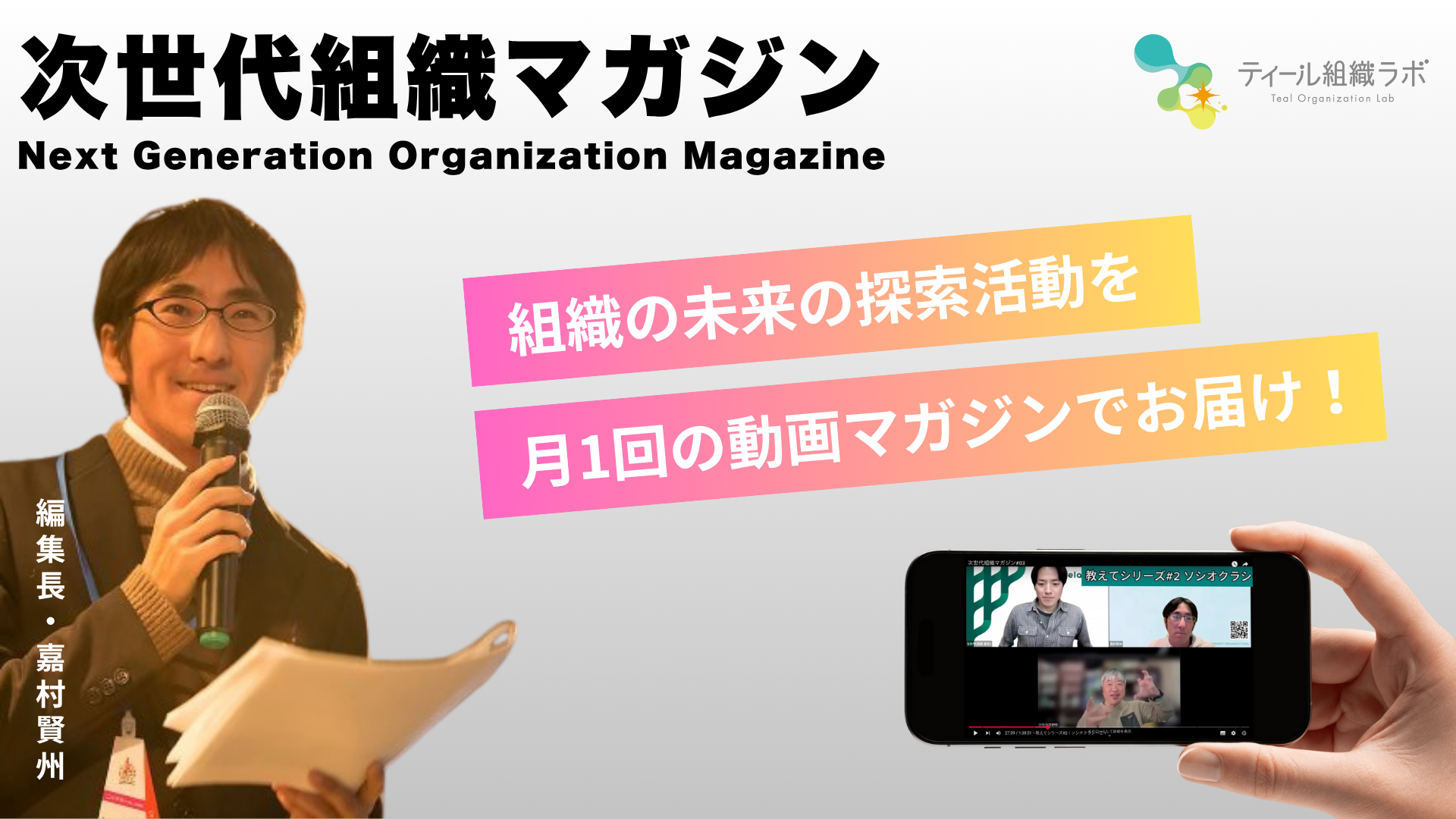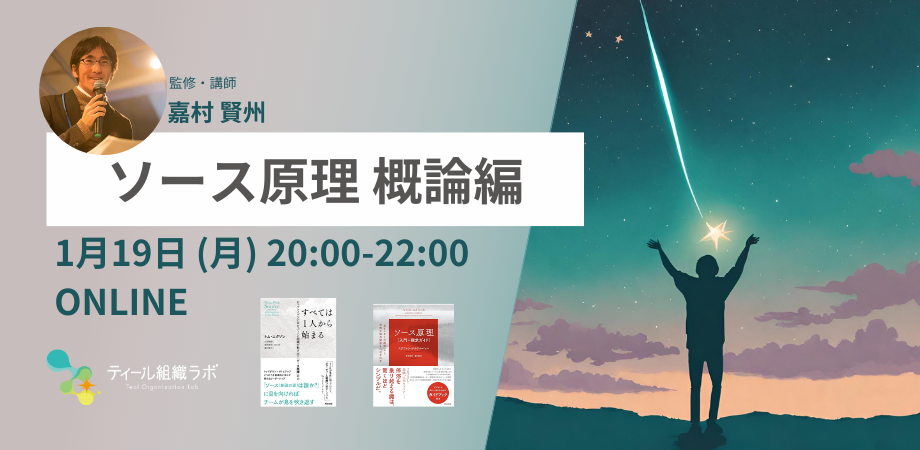ティール組織Wiki
Teal Wiki
Top page
Category
カテゴリー
- はじめに
- 組織の発達段階について
- 3つの突破口
- ティール組織の構造と実践
- 事 例
Category
カテゴリー
グリーン・パラダイムと組織
グリーン組織は、調和、寛容、平等を目指す意識のグリーン段階[1]を反映している。ピラミッド型構造を維持しながらも、グリーン組織は、モチベーションを高め、素晴らしい職場を作るためのエンパワーメントに重点を置いている。オレンジのような株主重視にとどまらず、すべてのステークホルダーを包含している。家族が支配的なメタファーである。

グリーンの意識段階
グリーンは物質主義、社会的不平等、コミュニティの喪失といったオレンジの影に気づいている。グリーンは人々の感情に敏感で、すべての視点が尊重に値すると考えている。コミュニティ、協力、コンセンサスを求める。個人は、みんなと調和のとれた絆を育むために所属しようと努力する。
先進工業国では、18世紀後半から19世紀にかけて、グリーンから活動する小さなサークルが、奴隷制の廃止、女性の解放、民主主義を唱えた。
ケン・ウィルバーはこう言う:理性と世界中心主義の道徳への転換とともに、私たちは現代の解放運動の台頭を目の当たりにする。人種、性別、信条に関係なく、すべての人間にとって公正で正しく、正義であるものを。…1788年から1888年までのわずか100年間で、あらゆる合理的産業社会から奴隷制度が非合法化された。(それ以前のパラダイムでは)奴隷制度は完全に容認されている。なぜなら、平等な尊厳と価値はすべての人間に拡大されるのではなく、単に自分の部族の人間に拡大されるだけだからである。ほとんど同じ理由から、フェミニズムと女性運動が文化的な規模で台頭することになる……民主主義もまた、根本的に斬新なものだった……ギリシャの「民主主義国家」では、3人に1人が奴隷であり、女性と子どもは事実上そうであったことを覚えておこう[2]。
18世紀後半から19世紀にかけて、少数のエリートが西洋の思想を大きく形成した。20世紀になると、その数はさらに増えた。今日、ビジネスや政治ではオレンジが優勢だが、学術的思考、非営利団体、ソーシャルワーク、地域活動ではグリーンが非常に重要である。
この観点からは、結果よりも人間関係が重視される。トップダウンで意思決定するよりも、協調的でボトムアップのプロセスをグリーンは好み、対立する意見をコンセンサスに導こうとする。オレンジは決断力を尊ぶ。グリーンはリーダーに、率いる人々のために尽くすことを求める。この姿勢は気高く、寛大で、共感的である。不平等や差別が続く中、人生には自己中心的な出世や成功の追求以上のものがあるはずだ。
しかし、この段階には矛盾がある。あらゆる観点を平等に扱おうとし、不寛容な考えに対して他人がその寛容さを乱用すると行き詰まる。赤の自己中心性、琥珀の確実性、オレンジはこれをグリーンの理想主義と見る。グリーンにおけるルールとの関係は曖昧である。ルールというのは恣意的で不公平なものである一方、それをなくすことは非現実的である。グリーンは、古い構造を打破するためのパラダイムとしては強力だが、現実的な代替案を策定する上ではあまり効果的でないことが多い。
グリーン組織の突破口と特徴
グリーンは、権力やヒエラルキーに違和感を感じる。上層部が下層部を支配することを意味するなら、階層を廃止しよう。皆に同じ力を与えよう。労働者が平等に会社を所有し、コンセンサスによって意思決定を行えるようにしよう。
19世紀末から20世紀初頭にかけての協同組合運動や、1960年代のコミューンのように。今にして思えば、こうした極端な形の平等主義は、規模的にも時間的にも成功しないことが証明された[3]。大きな集団の中でコンセンサスを得ることは、本質的に難しい。
しかし、グリーンは3つのブレークスルーを経て、独自の組織モデルを考え出した。スターバックス、サウスウエスト航空、ベン&ジェリーズ、ザ・コンテナストアなど、最近最も有名で成功を収めている企業は、グリーンの実践と文化を基盤としている。
グリーンの突破口1:エンパワーメント
グリーン組織は、オレンジのような実力主義的な階層構造を維持しながらも、できるだけ多くの意思決定を現場の従業員に下ろしている。彼らは経営陣の承認なしに、広範囲に及ぶ決定を下すことができる。
彼らは多くの、より小さな、日々の問題に直接触れることができる。彼らは、遠く離れた専門家よりも優れた解決策を考案できると信頼されている。例えば、サウスウエスト航空の地上チームは、乗客の問題に対する創造的な解決策を模索する権限を与えられている: 他のほとんどの航空会社の社員は、ルールブックに従わなければならない。
分散化と権限委譲を大規模に機能させることは容易ではない。管理職は事実上、権力と制御を分かち合うことを求められているのだ。それを機能させるためには、企業は上級管理職と中間管理職にどのようなリーダーシップを期待するかを明確に示さなければならない。グリーン・リーダーは、(オレンジのように)単に冷静な問題解決者であるべきではなく、サーバント・リーダーであるべきだ。部下の声に耳を傾け、力を与え、やる気を起こさせ、成長させる。サーバントリーダーの育成には時間と労力が費やされる:
- 管理職候補者は、その考え方と行動で審査される: 権力を分かち合う準備ができているか?彼らは謙虚さをもって指導するだろうか?
- グリーン組織では、新しく昇進した管理職を対象に、サーバントリーダーのマインドセットとスキルを教えるコースに多額の投資を行うことが多い。
- 管理職は360度フィードバックに基づいて評価され、上司は部下に対して説明責任を果たす。
- 上司を上から任命するのではなく、部下が候補者と面談した後に上司を選ぶという企業もある。
グリーンの突破口2:価値観主導の文化と触発される(inspirational)目的
強力で共有された文化は、権限を与えられた組織がバラバラにならないための接着剤である。現場の従業員は、分厚い方針書ではなく、共有された価値観に導かれて意思決定することを信頼される。
このことに冷めて、価値観の共有という概念を軽んじる人もいる。なぜなら、オレンジ色の組織はますますそれに従わなければならないと感じるようになっているからだ: 価値観を定義し、壁やオンラインに掲示し、そうする方が利益につながるとなれば、価値観を無視する。しかし、リーダーシップが純粋に共有された価値観に従って行動しているところでは、従業員が感謝され、力を与えられていると感じる、驚くほど活気に満ちた文化に出会うことができる。結果はしばしば目を見張るものがある。調査によると、価値観主導型の組織は、同業他社を大きく上回ることができる[4]。
グリーン組織は、触発される目的を活動の中心に据えることができる。サウスウエストは、自社を単なる輸送事業とは考えておらず、顧客がサウスウエストの低運賃なしには行けない場所に行けるよう支援する「自由」の事業だと主張している。ベン&ジェリーズはアイスクリームだけでなく、地球と環境にも配慮している。
オレンジ組織では、戦略とその実行が最優先される。グリーン組織では、文化が最優先される。グリーン組織の最高経営責任者(CEO)は、文化と価値観の共有を促進することが第一の仕事だと主張する。この焦点は、人事(HR)を中心的な役割に押し上げる。人事部長は多くの場合、上級チームの有力メンバーであり、CEOの相談役でもある。彼女は、トレーニング、カルチャー・イニシアチブ、360度フィードバック、後継者育成計画、士気調査などのプロセスへの大規模な投資を指揮する大規模なスタッフを率いている。
グリーンの突破口3:複数のステークホルダーの視点
グリーン組織は、企業には投資家だけでなく、経営者、従業員、顧客、サプライヤー、地域コミュニティ、社会全体、そして環境に対する責任があると主張している。リーダーシップの役割は、すべてのステークホルダーが繁栄できるよう、適切なトレードオフを行うことである。
これは、営利企業は株主の視点に立って運営されるべきであり、経営者の主な義務は投資家のために利益を最大化することであるというオレンジの視点とは対照的である。アダム・スミスの “見えざる手 “は、このことが長期的にすべてのステークホルダーに利益をもたらすことを説明するために、しばしば引き合いに出される。
今日、多くの大企業が社会的責任報告書の発行を義務付けられているが、グリーン組織は、社会的責任を事業のあり方に不可欠なものと考えている。それは気晴らしの義務ではない。
社会的責任は、イノベーションを起こし、より良い企業市民になるための動機付けとなる。発展途上国のサプライヤーと協力して労働条件を改善し、児童労働を防止し、二酸化炭素排出量と水の使用量を削減し、製品をリサイクルし、梱包材を削減する。
グリーン組織のリーダーたちは、「ステークホルダーの視点」は短期的にはコスト増を意味するかもしれないが、長期的には株主を含むすべての人に利益をもたらすと主張している。
指針となるメタファーとしての家族
グリーン組織における支配的なメタファーは家族である。これは、達成-オレンジにおける「機械としての組織」とは対照的である。グリーン組織のリーダーが話をするとき、この比喩が頻繁に出てくることに気づかないはずはない: 従業員は同じ家族の一員であり、一緒に仕事をし、互いに助け合い、互いのために存在する。
サウスウエスト航空では、8つの訓令のひとつに「奉仕の心」を示すことが挙げられている。サウスウエスト・ウェイでは、従業員が “SWAファミリーを受け入れる “ことである。透析センターを運営する大手企業であるダヴィータは、グリーン原則を一貫して実践している[5]。ダヴィータは、もうひとつのコミュニティの比喩である “ビレッジ “を使い、41,000人の従業員を市民と呼んでいる。本社はカーサ・ダヴィータと呼ばれ、会長兼CEOのケント・サーリーは村長と呼ばれている。彼は、1999年の事実上の倒産状態から、彼がもたらしたグリーン・カルチャーによって会社を現在の成功に導いたと評価されている。
グリーンの影
グリーンは、オレンジからの脱却、特にオレンジの影からの脱却の動きから生まれた。そのピークにおいて、グリーンは共同体主義的であり、平等主義的であり、合意主義的である[6]。
グリーンの功績は大きく、おそらく誇張しすぎることはないだろう。グリーンが存在していた短い間に、人類はより人間らしい社会への大きな変化を経験した:公民権運動、女性解放運動、環境保護の世界的な推進、生態系を保護する必要性に対する意識の高まり、医療改革、社会におけるマイノリティ・グループの疎外に対する意識の改善など、グリーンがなければ決して生まれなかった進歩の例ばかりである。
しかし、グリーンはオレンジ、そしてある程度前の段階との健全なバランスを保つものであるのと同時に、自らのスペクトルに固執しすぎ、まさに影の傾向を見せる段階でもある。
境界のない相対主義
グリーンは、その博愛と寛容が、グリーンが対等な条件で平等に招き入れたいと望む同じグループによって悪用されたとき、ジレンマに陥る。グリーンの影は、寛容でないアンバーやレッドが寛容を乱用したときに受け入れるか、すべての世界観が同じ成熟度を持っているわけではなく、異なるレベルの制限が必要かもしれないことを認めるかの選択を迫られる。
非合理的な方が良い
オレンジ(合理的)な見方から距離を置こうとして、グリーンの影はすべての非合理的な価値体系を好ましいものとみなす。グリーンは「自然に戻る」というロマンチックな考え方を持っている。この時、前・合理的な世界観がいかに深く制限されたものであるか、その世界観は後・合理的なグリーンの世界観といかに異なるものであるかに気づかないことが多い。
多元的アイデンティティの外部性としての偶然的同一性
グリーンの強い包摂意欲がアイデンティティになると、集団への加入を検討するための前提条件として、理想を共有する必要性が生じる[7]。この「私のように、私たちのように」というフィルターが、個人が組織の目的に貢献する意欲と能力があるかどうかよりも、メンバーシップを決定するために重要になると、これはしばしば集団レベルで3つの問題を引き起こす: 人の選択の制限、組織内の多様性の欠如、そして物事を成し遂げる能力の制限である。
権力と構造が平等の障害
グリーンの影は権力と構造を混同している。自然界には構造も自然のヒエラルキーも溢れている。不平等を根絶するために、緑の影はしばしばすべてのヒエラルキーと構造を解体しようとする。しかし、組織から形式的な構造をすべて取り除いても、権力は衰えるどころか、権力は地下の非公式な構造へと追いやられる。こうしたインフォーマルな構造のメンバーが、グループ全体のメンバーによって選出されない場合、権力を持つ個人はグループや組織全体に対して答える必要がなくなる。これにより、権力行使に関する透明性が低下し、権力と説明責任が切り離される。すべての集団は、メンバー間の相互作用パターンの結果として、非公式な構造を生み出す。そのような非公式な構造は、非常に有用なことを行うことができる。しかし、構造化されていない集団だけが、それらに完全に支配されている。インフォーマルなエリートが「無構造」神話と結びつくと、権力の行使に制限をかけようとする試みができなくなる。
結果:a) 人々は、その人が重要なことを言うからではなく、その人が好きだから他人の言うことに耳を傾ける。b) 非公式な構造には、グループ全体に対して責任を負う義務はない。彼らの権力は与えられたものではなく、奪うことはできない。彼らの影響力は、彼らがグループのために何をするかに基づいているわけではないので、グループから直接影響を受けることはできない。[詳しくはジョー・フリーマン著『無構造の専制』を参照。]権力は、単純に願い下げにすることはできない。ヒドラのように、その頭を切り落としても、別のものが別の場所に現れるのだ。
Notes and references
※以下、長文です※
1.This stage corresponds to Loevinger’s and Cook-Greuter’s “Individualistic,” Torbert’s “Individualist,” Wade’s “Affiliative,” Graves’ “FS,” Spiral Dynamics’ “Green,” and others; it is often simply referred to as postmodernity.
2.Often in history we find ideas, like democracy in ancient Greece, ahead of their times, meaning ahead of the developmental center of gravity of people at that moment in time. To flourish, these ideas have to wait for evolution to catch up with them, to provide the right “cultural womb” as the American philosopher Richard Tarnas calls it: A big question here is why did the Copernican Revolution happen in the sixteenth century, with Copernicus himself, and in the early seventeenth century, with Kepler and Galileo? Why did it take until then, when a number of people prior to Copernicus had hypothesized the heliocentric universe and a planetary earth? There’s evidence of this being proposed among the ancient Greeks and in India and Islamic cultures during the European Middle Ages. I think this question shows the extent to which a major paradigm shift depends on more than just some additional empirical data and more than just a brilliant new theory using a new concept. It really depends on a much larger context so that the seed of a potentially powerful idea falls on a whole different soil, out of which this organism, this new conceptual framework, can grow—literally a “conception” in a new cultural and historical womb or matrix. Richard Tarnas and Dean Radin, “The Timing of Paradigm Shifts,” Noetic Now, January 2012.
3.In the corporate sector, worker cooperatives have failed to achieve any meaningful traction. The ones that prevail are often run on practices that are a combination of Orange and Green. One often-cited success story is Mondragon, a conglomerate of cooperatives based in a Basque town of the same name in Spain (around 250 companies, employing roughly 100,000 people, with a turnover of around €15 billion). All the cooperatives are fully employee-owned. Bosses are elected; wage differentials are smaller than elsewhere (but still significant, at up to 9:1 or more); temporary workers have no voting rights, creating a two-tiered community where some are more equal than others. In the educational sector, there have been several models of schools with no authority structures from adults over children, most notably the Summerhill School, a British boarding school founded in the 1920s. It practices a radical form of democracy, where students and adults have the same voting power, and lessons are not compulsory, among other differences. In the institutional sphere, many supranational bodies―the United Nations, European Union, and World Trade Organization, and others―have decision-making mechanisms at the highest level that are, at least partially, molded along Green principles such as democratic or unanimous voting of the different member countries and rotating chairmanship. These Green decision-making principles are difficult to uphold, and richer or more powerful countries demand and often end up receiving more voting powers (often even implicit if not explicit veto powers). The staff departments of these institutions are most often run as Amber Organizations.
4.The first major study dates from 1992, when Harvard Business School professors John Kotter and James Heskett investigated this link in their book Corporate Culture and Performance. They established that companies with strong business cultures and empowered managers/employees outperformed other companies on revenue growth (by a factor of four), stock price increase (by a factor of eight) and increase in net income (by a factor of more than 700) during the 11 years considered in the research. A more recent study by Raj Sisodia, Jagh Sheth, and David B. Wolfe, in what is arguably a defining book for the Green organizational model―Firms of Endearment: How World-Class Companies Profit from Passion and Purpose―came to similar conclusions in 2007. The “firms of endearment” studied by the authors obtained a cumulative return to shareholders of 1,025 percent over the 10 years leading up to the research, as compared to 122 percent for the S&P 500. From a methodological point of view, these results should be taken with a grain of salt. There is an obvious selection bias, as only exceptional companies that one would expect to outperform their peers were handpicked into the sample. The benchmark of the S&P 500 wasn’t adjusted for industry, size, or other criteria. Furthermore, criteria other than the organization model, such as patents, innovative business models, and asset utilizations that could explain the superior result, were not filtered out. Raj Sisodia’s latest book, written with John Mackey, has a whole chapter with references of similar studies to which interested readers can refer. Any research trying to make such general claims as the superior outcome of one organizational model over another is bound to hit methodological discussions (and on a principled level, one could question shareholder return or growth as the primary metric to gauge success, as most of these studies do). Perhaps direct experience ultimately matters more than academic claims. Anyone who spends time in organizations such as Southwest Airlines or The Container Store will return convinced that empowered workers in values-driven companies will on average outperform their peers in more traditional settings.
5.The 2006 Stanford Business Case on DaVita is highly readable and a good resource for readers wanting to immerse themselves in a more detailed description of Green organizational principles and practices.
6.Don Beck puts it this way: “Our science left us numb, without heart and soul, and with only the outer manifestations of success. The “good life” was measured only in materialistic terms. We discover that we have become alienated from ourselves, as well as from others. […] the basic human being has been neglected. The focus shifts from personal achievement to group- and community-oriented goals and objectives—for GREEN, we are all one human family. GREEN begins by making peace with ourselves and then expands to looking at the dissonance and conflicts in society and wanting to make peace there, too, addressing the economic gaps and inequities created by ORANGE, and also by BLUE and by RED, to bring peace and brotherhood so we can all share equally. Gender roles are derigidified, glass ceilings opened, affirmative action plans are implemented, and social class distinctions blurred. Spirituality returns as a nondenominational, nonsectarian “unity.””
7.The resulting attitude becomes protection of the unique sameness inside the organization. This couples with an implicit judgement and suspiciousness of outsiders as potential threats to the established culture. This typically does not manifest in explicit or outspoken criticism as Green often tries to avoid confrontation. Rather this is more often seen as a moral high ground of implicit “shoulds” and unspoken expectations of certain views and means of expressions that must be exhibited or agreed on for acceptance from insiders. Any lack of such views or expression is confirmation that non-acceptance is justified. Clare W Graves puts it this way: “Green brings into existence the sociocratic value system, in which emphasis is placed upon ‘getting along’, accepting the authority of the group or the majority, and seeking status from others. This ‘other directed’ individual believes he will find salvation in belonging and in participating with others in what they want him to do. While the individual has given up his dogmatism, he nevertheless rigidifies in a world of sociocentric thinking.”, for more see The Mean Green Hypothesis: Fact or Fiction, by Natasha Todorovic
8.The natural cause of differences of power and influence is rooted in the diversity in individual people. We all have different levels of abilities, experience, range of expression and when we use these they naturally result in exercise of our own personal power – which is genuinely different in strength and nature. Jo Freeman puts it this way: “The idea of ‘structurelessness’ does not prevent the formation of informal structures, but only formal ones. […] Thus, ‘structurelessness’ becomes a way of masking power. An unstructured group always has an informal, or covert, structure. It is this informal structure, particularly in unstructured groups, which forms the basis for elites. An elite refers to a small group of people who have power over a larger group of which they are part, usually without direct responsibility to that larger group, and often without their knowledge or consent. Elites are not conspiracies.These friendship groups function as networks of communication outside any regular channels for such communication that may have been set up by a group. Because people are friends, usually sharing the same values and orientations, because they talk to each other socially and consult with each other when common decisions have to be made, the people involved in these networks have more power in the group than those who don’t. For everyone to have the opportunity to be involved in a given group and to participate in its activities there needs to be explicit structure. The rules of decision-making must be open and available to everyone, and this can only happen if they are formalised. A ‘Structurelessness’ organisation is impossible. We can only decide whether or not to have a formally or informally structured one. […
PICK UP
注目のお知らせ









